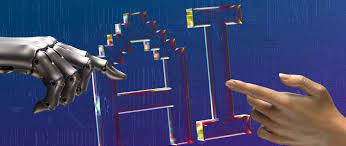AI Hallucinations: Navigating the Boundaries of Artificial Intelligence and Creativity

Artificial Intelligence (AI) has made tremendous strides in recent years, showcasing its ability to perform complex tasks, analyze data, and even generate creative content. However, as AI systems become more sophisticated, a fascinating and somewhat enigmatic phenomenon has emerged — AI hallucinations. In this article, we’ll delve into the world of AI hallucinations, exploring what they are, how they occur, and the implications they hold for the future of artificial intelligence.
Defining AI Hallucinations
In the context of AI, hallucinations refer to the generation of content that goes beyond the parameters of the data the system has been trained on. In other words, AI hallucinations involve the creation of images, text, or other content that seems to emerge from the AI’s imagination rather than being a direct reflection of the input data it has been exposed to.
This phenomenon is particularly intriguing because it raises questions about the boundaries of AI creativity and the potential for machines to generate content that goes beyond their programmed capabilities.
How AI Hallucinations Occur
AI hallucinations typically arise in neural network-based models, especially in the realm of generative models like Generative Adversarial Networks (GANs) and recurrent neural networks (RNNs). These models are designed to learn patterns and features from large datasets, and they can then generate new content based on that learned information.
The hallucination aspect comes into play when the AI starts to generate content that seems to be extrapolated or synthesized from its training data in unexpected ways. This can result in the creation of images, text, or even music that exhibits a level of creativity or divergence from the norm that was not explicitly programmed into the AI.
Exploring the Creative Capabilities of AI
AI hallucinations prompt us to reconsider the creative potential of artificial intelligence. While traditional AI tasks involve pattern recognition and data analysis, the emergence of hallucinations suggests that AI systems can exhibit a form of creativity. This creative capacity is not equivalent to human creativity, as it relies on learned patterns rather than subjective experiences, emotions, or intuition. However, it opens up new possibilities for AI-generated content that transcends conventional expectations.
**1. Visual Hallucinations
In the realm of visual AI hallucinations, models like GANs have demonstrated the ability to generate images that blend and remix elements from their training datasets in unexpected ways. These hallucinated images may feature surreal landscapes, bizarre creatures, or abstract compositions that go beyond the scope of the original data.
**2. Textual Hallucinations
Text-generating models, such as OpenAI’s GPT-3, have showcased textual hallucinations by producing coherent and contextually relevant passages that were not explicitly present in their training data. This capacity for generating contextually appropriate text suggests a level of language understanding and creativity in AI systems.
**3. Musical Hallucinations
In the domain of music, AI models trained on diverse musical genres have demonstrated the ability to compose original pieces that capture the essence of different styles. These musical hallucinations showcase the potential for AI to contribute to the creative process in fields traditionally associated with human expression.
The Ethical Implications of AI Hallucinations
As AI systems exhibit creative capacities that extend beyond their training data, ethical considerations come to the forefront. Understanding and addressing the ethical implications of AI hallucinations is crucial to ensuring responsible and transparent AI development.
**1. Bias and Unintended Consequences
AI systems, including those prone to hallucinations, are susceptible to biases present in their training data. Hallucinated content may inadvertently reflect and perpetuate existing biases, leading to unintended consequences. Addressing bias in AI systems remains a priority to ensure fair and equitable outcomes.
**2. User Misinterpretation
AI-generated content, especially when hallucinated, may be misinterpreted by users who assume a level of intentionality or understanding on the part of the AI. Managing user expectations and providing clear communication about the limitations of AI creativity is essential to avoid misunderstandings.
**3. Unintended Content Generation
AI hallucinations may lead to the generation of content that could be deemed inappropriate, offensive, or harmful. Striking a balance between creative exploration and responsible content generation is vital to prevent the dissemination of content that goes against ethical norms.
The Future of AI Hallucinations
As AI hallucinations continue to capture the imagination of researchers, developers, and the general public, the future holds both challenges and exciting possibilities.
**1. Refinement of Creative Capabilities
Ongoing research and development efforts are likely to focus on refining the creative capabilities of AI systems. Fine-tuning models to generate content that aligns more closely with human expectations while avoiding unintended consequences will be a key area of exploration.
**2. Ethical Frameworks and Guidelines
The establishment of ethical frameworks and guidelines for AI development will play a pivotal role in shaping the responsible use of hallucinating AI systems. Collaborative efforts involving researchers, developers, policymakers, and ethicists will be essential to create standards that prioritize transparency, fairness, and user safety.
**3. Integration with Human Creativity
The intersection of AI creativity and human creativity holds immense potential. Collaborative projects that leverage AI hallucinations alongside human input could lead to novel forms of artistic expression, interactive experiences, and innovative problem-solving approaches.
Conclusion
AI hallucinations represent a captivating frontier in the ongoing evolution of artificial intelligence. As these systems demonstrate glimpses of creativity that extend beyond their initial programming, they challenge preconceived notions about the limitations of machine learning. The ethical considerations surrounding AI hallucinations underscore the importance of responsible AI development and deployment.
While AI hallucinations are not a flawless emulation of human creativity, they open doors to novel applications, artistic collaborations, and advancements in AI-generated content. As researchers and developers navigate the boundaries of AI and creativity, the journey promises not only technical innovation but also a deeper understanding of the relationship between machines and imagination. The future of AI hallucinations holds the potential to reshape how we perceive artificial intelligence and its role in the creative landscape.




